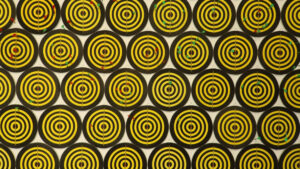Base Metals: This Irish zinc play is dancing its way to a resource upgrade

Zinc success Pic: Getty
Ireland is commonly known for Guinness and leprechauns. What is not as well known is that it is also one of the world’s largest zinc producers that also tops the list for the tonnage of zinc discovered per square kilometre.
Aptly named explorer Zinc of Ireland (ASX:ZMI) is clearly in the right spot then for its chosen mineral with its latest exploration efforts spitting up what it thinks are some good numbers.
Zinc of Ireland could now be looking at a potential resource upgrade for its Kildare project in Ireland after drilling confirmed the continuity of thick zinc mineralisation in the Fault Compartment 3 (FC-3) prospect.
The company intersected 100m-plus mineralised zones in FC3 with a top result of 162m at 1.8 per cent zinc and 0.2 per cent lead from a depth of 302m, which is consistent with mineralisation at the McGregor and Shamrock deposits.
Additionally, the top intersection includes two high-grade zones of 2m at 10.13 per cent zinc and 1.08 per cent lead from 402m and 2m at 10.32 per cent zinc and 0.39 per cent lead from 460m.
The latest drilling has expanded FC-3 zinc mineralisation over an area of about 300m by 200m.
Kildare currently has a resource of 9 million tonnes grading 9.5 per cent zinc and lead.
“The latest FC-3 drilling, continues to augur very well for the immediate resource growth potential of the Kildare zinc project,” executive director Patrick Corr said.
“High-grade zinc-lead mineralisation in FC-3 occurs in the same stratigraphic and structural locations as encountered at McGregor and Shamrock, and there are very thick zones of mineralisation consistent with that seen at McGregor and Shamrock.
“Perhaps most significantly though, is that FC-3 forms part of a much larger mineralised system, connecting the existing McGregor and Shamrock resources which presents a range of exploration and development advantages.”
Meanwhile, Adriatic Metals (ASX:ADT) has intersected some of the best high-grade zones in the southern extensions of mineralisation at its Rupice polymetallic project in Bosnia & Herzegovina.
The hit of 16m at 1.96 grams per tonne (g/t) gold, 350g/t silver, 5.3 per cent zinc, 3.4 per cent zinc, 0.5 per cent copper and 43 per cent barite is also the deepest intercept to date at Rupice as it starts from a depth of 330m.
Along with another southern drill hole, the company has now established that extensions of the high-grade mineralisation are continuous over 550m and remain open along strike in the south towards the Jurasevac-Brestic prospect.
“The latest drill results in the southern extensions of the Rupice deposit clearly demonstrate that the high-grade mineralisation continues outside our current mineral resource and south towards our Jurasevac-Brestic prospect a further 500m to the southeast,” managing director Paul Cronin said.
“This is our deepest high-grade intercept to date at Rupice and given its location to the east of the current mineralisation, opens the deposit to reinterpretation of the structural controls that have led to the thickest and highest grade results on the eastern down dip extent.”
Read more:
Base Metals: Limited drilling has handed Adriatic very high polymetallic grades
In other ASX base metals news today:
Auroch Minerals (ASX:AOU) has completed a detailed review of historical data that indicates the presence of thick, high-grade massive nickel sulphide mineralisation at its recently acquired Leinster project in Western Australia. This includes a top drill intersection of 14.66m at 2.19 per cent nickel.
UNLOCK INSIGHTS
Discover the untold stories of emerging ASX stocks.
Daily news and expert analysis, it's free to subscribe.
By proceeding, you confirm you understand that we handle personal information in accordance with our Privacy Policy.








